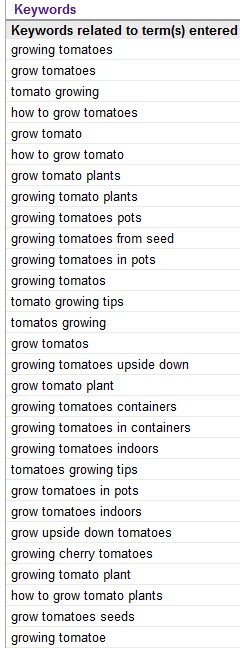Broad keywords will bring you a lot of traffic, but long-tail (more specific) keywords will get you much more quality traffic and more conversions. Think about it: someone searching for “Sony DSC50” is a lot more likely to buy than someone searching for “digital cameras”.
According to Google, 20-25% of the searches people make have never been made before. What does this mean to you? That people are searching for a lot of very specific things, and if you do a better job at optimizing your site for these long-tail keywords, you will get a lot more traffic. The best part is that because the long-tail keywords don’t have a high search volume, fewer people do any SEO for them, therefore they’re not as competitive and it’s a lot easier to rank for them.
Sometimes, all you have to do is put the keyword on a page and wait for Google to index it.
Step 1: Find the Long-Tail Keywords
If you’re about to write an article on growing tomatoes, you obviously want to include the keywords “grow tomatoes” and “growing tomatoes” in your article. But what about the less obvious keywords? Use the Google Keyword Tool to get suggestions.

Step 2: Put Several of These Keywords in Your Article
Some of these keywords are somewhat competitive and you’ll never rank for them unless you optimize your website more, create more content around them and build some anchor text links. But some of these keywords are extremely easy to rank for and just by placing the keyword in an article you can rank on the first page of Google for that keyword.
The better your content is and the more you promote it, the more links your article will get. More links help you rank higher, so basically the more you promote your content the better you’ll rank for all the keywords you included in your article.


